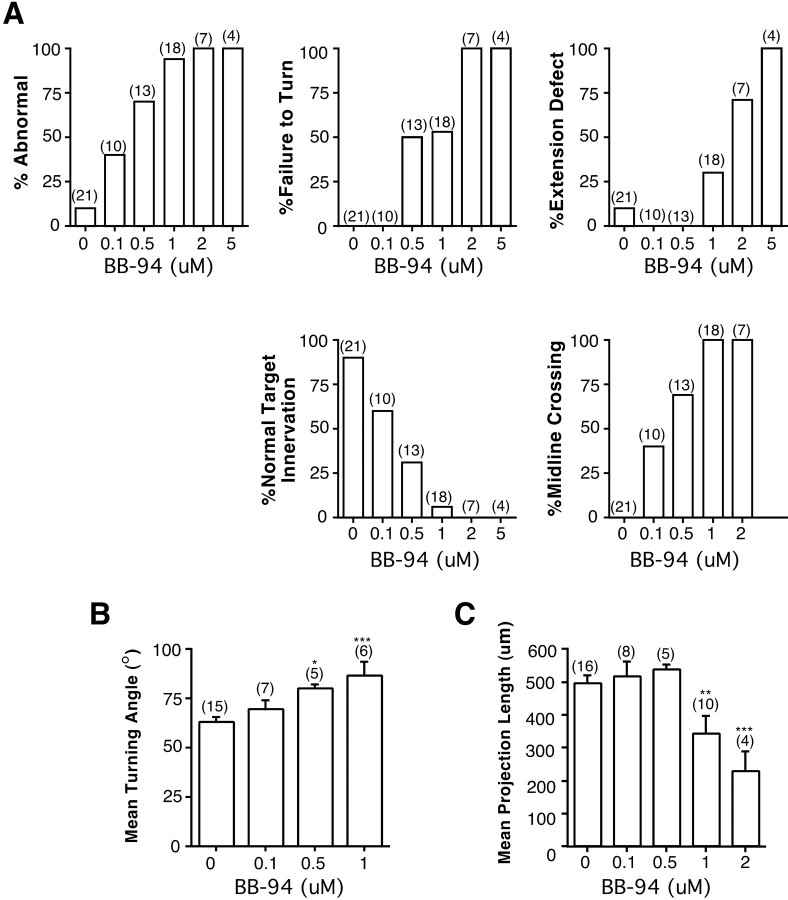Fig. 6.
Defects in RGC axon pathfinding and target recognition caused by the application of BB-94. A, Qualitative description of the different defects in axon behavior observed in optic projections treated with BB-94.Numbers in parentheses represent the number of embryos. The description of the defects is the same as presented in the legend to Figure 2. B, C, Control and BB-94-treated brains were exposed at stage 33/34 and fixed at stage 40. Measurements were made as described in the legend to Figure 3.B, Effect on mean turning angle of increasing doses of BB-94. C, Dose–response of the effects of BB-94 on optic tract length (in micrometers). At lower concentrations, at which defects in pathfinding are observed, the extension of RGC axons is unaffected by BB-94. At the highest concentrations of BB-94, the optic projection is significantly shorter than in control exposed brains. *p < 0.05; **p < 0.01; ***p < 0.001; ANOVA, Student–Newmann–Keulspost hoc test. The numbers of embryos are shown inparentheses, and error bars are SEM.

